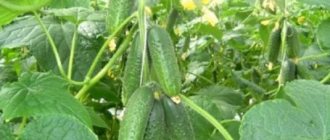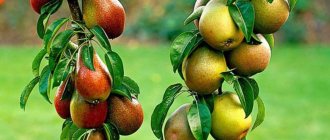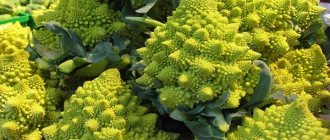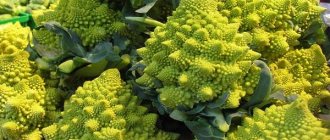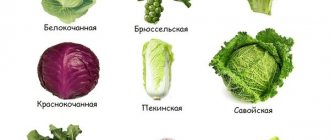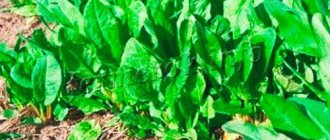Early melon varieties
Melons with a growing season of 60 - 80 days are considered early ripening. And here they can be divided into 2 more groups:
- The first group includes varieties with a ripening period of 60 - 70 days. These varieties are early.
- But the second one ripens within 70 - 80 days, and is considered mid-early.
I would like to note that early ripening melons are usually less sweet. And this is because in such a short period of time, the fruits simply physically cannot have time to accumulate a sufficient amount of nutrients. At the same time, such varieties most often are not large-fruited and super-yielding. By the way
, thanks to the work of breeders around the world, there are currently many varieties and hybrids of melon, which, with a short ripening period, contain a lot of sugar.
Early ripening melons are usually poorly stored and transported. It is worth understanding that they are intended for consumption as early as July. They should be the first to delight gardeners with their sweet fruits. And that is precisely why they are planted.
On a note
!
Typically, such early varieties in Russia are grown through seedlings, and only in the southern regions can the seeds be planted directly into the ground. Important
: in the central zone and more northern regions, melon is grown exclusively in greenhouses.
varieties of melon
in Russia : Passport F1, Dune, Caramel F1, Altai, Cinderella, Amal F1, Zolotistaya, Iroquois F1, Serezhkina Lyubov, Tamanskaya, Chudo-Yudo, Princess Maria, Raymond, Zlato Scythians.
And further, the best of them will be described. Are we watching?
Passport F1
The melon variety Passport F1 has a growing season of 59 - 76 days, and is therefore considered early ripening.
The fruits of the variety grow up to 1.2 kg - 2.2 kg. Their color is yellow-green without a pattern. The mesh is solid. The pulp is creamy and varies in thickness from medium to thick. Advantages
:
- High yield (81 - 184 c/ha).
- Excellent sweet taste (sugar content 6 - 8%).
- Precocity.
- Good immunity from diseases.
Flaws
:
- Fruits can be stored after harvesting for no more than 7 days.
- It is a hybrid, so it is not possible to produce its own seeds.
Dune
Melon Dune has a ripening period of 58 - 75 days after full germination.
The fruits of the variety are oval in shape and yellow in color. The mesh on them is solid and of medium density. Melons can grow up to 1.4 kg - 1.7 kg. When cut, you can observe the light creamy flesh, which has a granular structure, tenderness and juiciness. Variety value
:
- The average yield per hectare is 92 - 150 centners. And that's very good.
- Early ripening.
- Great taste.
- Transportability.
- Resistance to major diseases.
- Ability to be stored for a long time.
Caramel F1
Melon varieties such as Caramel F1 are early maturing.
The hybrid is able to ripen within 62 - 66 days after all the seeds have been pecked. It was created by French breeders. Melons grow up to 1.2 kg - 1.9 kg, and they have a dark yellow bark, which is covered with a continuous and thick net. The flesh is light cream in color and is thick, tender, juicy and aromatic. Advantages
:
- Early ripeness.
- High and stable yields (94 centners - 156 centners per 1 ha).
- The hybrid has good immunity, and is especially resistant to fusarium.
- Long-term transportation is possible.
- Sweet taste, since the sugar content in the fruit is 5.4 - 7.6%.
Flaws
:
- Short shelf life (15 - 20 days after collection).
Altai
Altai melon ripens within 65 - 75 days after full germination.
And it has oval-shaped fruits that can have an average weight of 0.8 kg - 1.6 kg. At the same time, the melons are colored orange-yellow. There is no picture. The mesh on the bark may be partially or completely. When cut, a thin and aromatic light orange pulp with a granular structure is visible. Among the advantages, the variety has
:
- Early maturation.
- Productivity 25 tons per hectare.
- Decent disease resistance.
- Good taste.
Flaws
:
- Poor transportability and keeping quality.
Cinderella
The Cinderella melon variety has a growing season of 60 - 62 days.
The fruits of the variety are oval in shape, and their color is yellow without a pattern, but with a continuous mesh on the surface. The average fruit weight can be 1.1 kg - 2.2 kg. And if you cut the fruit, then you can see thick (3 cm - 3.5 cm) light cream-colored pulp. Among the advantages of the variety are:
:
- Precocity.
- Good taste because the sugar content in the fruit is in the range of 5.4 - 9.3%.
- The variety can easily survive both low and high temperatures.
- Productivity 134 c/ha.
- Universal application.
Among the minuses are
:
- The ability to be stored is only 15 - 20 days.
"Cossack"
A variety of mid-season varieties, for the fruits to fully ripen, 71-96 days must pass after germination. The stem of the plant is climbing and thin. The leaves are strongly notched, medium-sized, kidney-shaped.
The fruit is oval in shape and weighs from 1.3 to 1.9 kg. The peel is smooth, slightly segmented, rich yellow in color, without a mesh pattern or other types of patterns. The dense bark hides the white, fibrous, slightly crunchy, sweet and juicy flesh.
“Cossack” is susceptible to powdery mildew and anthracnose.
Mid-season melon varieties
Melons that have a ripening period of 80 - 100 days are considered mid-ripening. And they are divided into 2 groups, as well as early ripening varieties:
- Varieties with a ripening period of 80 - 90 days can be considered mid-ripening.
- With a ripening period of 90 - 100 days, melons are medium-late.
Such varieties and hybrids of melon are usually sweeter. And this is facilitated by a longer growing season. And yet, mid-season melon varieties are stored much better.
Popular mid-season varieties
: Lada, Kolkhoznitsa, Ethiopian, Cossack 244, Galileo F1, Ozhen F1, Assol.
Next, we will consider the best of the mid-season varieties.
Lada
The Lada melon variety has a growing season of 74 - 96 days after all the seeds have been pecked.
The melons of this variety are yellow in color and are round in shape. There is no picture. The mesh on the peel is continuous. The average fruit weight is 1.5 kg - 2 kg. The flesh is cream-colored and its thickness is medium. Advantages of the variety
:
- High yield (211 centners - 218 centners per 1 ha).
- Excellent immunity.
- Great taste.
- Good keeping quality.
Minuses
:
- The need for plant formation.
Collective farmer
The Kolkhoznitsa melon ripens within 77 - 95 days after full germination, and is therefore considered mid-season.
It also has a yellow-orange peel without a pattern, but its flesh is white and thin. The shape of the fruit is spherical. The mesh is partial with a large cell. Weight 0.7 kg - 1.3 kg. Advantages of the variety
:
- Great taste.
- It is a transportable variety.
- Cold resistance.
- Productivity 14.6 t - 22.7 t per 1 ha.
Flaws
:
- Average disease resistance.
- Small fruits, but that’s what anyone cares about.
- Short shelf life.
Ethiopian
The Ethiopian variety is considered mid-season, as it ripens within 80 - 91 days after the seeds hatch.
And it has widely rounded fruits, which are colored dark yellow with an orange tint. The fruits have a mesh with medium density. And they most often have an average weight of 2.3 kg - 2.8 kg. When cut, you can see orange flesh. Advantages of
the melon variety
:
- High yields (89 - 145 centners per 1 ha).
- Heat-resistant, and can also withstand high humidity with dignity.
- Good taste with a characteristic melon aroma.
- Possibility of transportation.
Flaws
:
- Storage is possible for no more than 14 days.
- Average resistance to major diseases.
Cossack 244
Melon Kazachka 244 has a ripening period of 70 - 95 days after full germination.
The fruits of the variety are oval in shape, and they weigh on average 1.2 kg - 1.8 kg. At the same time, the melons have a bright yellow color without a pattern. There is not always a grid. The bark is hard and of medium strength. And under the bark there is white pulp, which is of medium thickness. And it is also dense, juicy and aromatic. Advantages of the variety
:
- High yield (17.7 t - 28.7 t per 1 ha).
- Good transportability.
- Great taste.
- The purpose is universal.
Minuses
:
- Relatively resistant to powdery mildew and anthracnose.
Galileo F1
Melon hybrid Galileo F1 has a growing season of 80 - 90 days, and therefore it is mid-season.
The plant has fruits that are yellow in color, and on their surface there is a thin mesh with medium density. The average weight of melons ranges from 1 kg to 1.5 kg. But the pulp of the hybrid is light green, which reaches a thickness of up to 4.8 cm. Advantages of the hybrid
:
- Harvest from 1 sq. m are removed 5 kg - 6 kg.
- Great taste.
Flaws
:
- Inability to obtain your own seeds.
Galia
Galia is ideal for making candied fruits
Galia is a melon that produces the most impressively sized fruits. And this is its distinctive feature. These melons are round in shape, their rind is yellow, with a slight orange tint and a network of small cracks. Inside there is dark flesh with a greenish tint, which has a sweet taste and bright aroma. Galia is a variety of Israeli origin. Now it is actively grown in South America, Chile and some US states.
The variety is considered very unpretentious. It matures within two months and appears on the shelves in early August. In terms of sugar content, the fruits are similar to the cantaloupe variety.
Galia is often used in various dishes - from salads to desserts.
Late varieties of melon
Melons with a ripening period of 100 days or more are considered late ripening. These melons are best suited for winter storage.
The best late varieties
: Wintering, Torpedo (Rainbow), Princess Svetlana F1.
Wintering
The Zimovka melon variety has a ripening period of 87 - 91 days after all the seeds have been pecked.
And it has oval-shaped fruits that are yellow-green in color. At the same time, there is no pattern at all, but the mesh is solid, coarse and coarse. The average weight of the fruit can be 1.3 kg - 2.5 kg. The pulp is light green in color and is medium in thickness. Advantages of the variety
:
- Sweet taste (sugar content 8.5%).
- Harvest from 1 hectare is removed at 85 centners - 139 centners. And this is good.
- Excellent shelf life (3 - 3.5 months) and transportability.
- Resistance to major diseases.
Disadvantages of the variety
:
- Long ripening period.
Torpedo (Rainbow)
Melon Torpedo has a growing season of 90 - 105 days.
The fruits of the variety are elongated in shape and are gray in color. The mesh on the surface of the fruit is average in thickness and density. Melons grow to an average of 2.5 kg - 6 kg, and they have greenish-white flesh that is of medium thickness. Advantages of
the melon variety
:
- It stores well (if optimal conditions are met, it can last until spring).
- Perfectly transportable to any distance.
- Tastes good.
- Can grow successfully even in temperate climates.
Flaws
:
- Demanding conditions. Here, the more sun there is, the sweeter the melon will be.
Princess Svetlana F1
The melon hybrid Princess Svetlana F1 is considered medium-late, and it ripens within 98 - 105 days.
The plant has round fruits that are white in color. There is no grid. Average weight 1.3 kg - 1.6 kg. The flesh is medium in thickness and orange. Advantages of a hybrid
:
- High yield (6.2 kg - 6.5 kg per 1 sq. m).
- Resistance to major diseases.
- Excellent taste characteristics.
- Can withstand bad weather conditions with dignity.
Flaws
:
- It is impossible to get your own seeds from it because it is a hybrid.
"Lada"
It has an average ripening period; a ripe crop can be harvested in 73-95 days. The plant has a main vine of short length and many additional ones. A slightly dissected leaf plate of medium size, green in color.
The fruit is round, with a yellowish, smooth skin. There are no patterns or designs on the surface. Melon weight is 1.6-2.1 kg. The fruits do not crack. The pulp has excellent taste. It is crispy and juicy, creamy in color. The aroma is not very pronounced.
Valuable qualities of the species: not susceptible to peronospora, aphids and powdery mildew.
Melon varieties for the Middle Zone
Varieties and hybrids for the Middle Zone must be zoned for your region. This is the only way to get a rich harvest. Although many modern varieties and hybrids can successfully withstand bad weather conditions, in any case, zoned varieties will be preferable.
Popular varieties for the Middle Zone
: Iroquois F1, Princess Svetlana F1, Passport F1, Serezhkina Lyubov, Cossack, Assol, Tamanskaya, Chudo-Yudo, Princess Maria, Raymond, Golden, Scythian Gold.
The best of these varieties will be described below. We also draw your attention to the fact that some varieties have already been mentioned above.
Iroquois F1
The Iroquois F1 melon hybrid has a growing season of 70 - 80 days after all the seeds have been pecked.
The fruits of the hybrid are oval in shape and their color is yellow-green. On the surface of the fruit there is a thick and coarse dense network. The average weight of melons can be 1.2 kg - 1.7 kg. When cut, you can observe orange pulp, which is 4 cm thick. Advantages of the hybrid
:
- Harvest from 1 sq. m plot is collected at 6 kg - 8 kg.
- Excellent taste.
- The hybrid can withstand bad weather conditions with dignity.
Disadvantages of a hybrid
:
- It is impossible to get your own seeds because it is a hybrid.
- After harvesting, the fruits must be placed in a room with a temperature of 10 - 15 ° C.
Tamanskaya
Melon varieties such as Tamanskaya are early ripening.
This variety has a ripening period of only 53 - 80 days after full germination. The fruits are oval in shape and their color is yellow. There is no picture. Medium density mesh. The bark is thin. The flesh is cream colored and is of medium thickness. On average, fruits grow 0.5 kg - 1.3 kg. Advantages of the variety
:
- Excellent sweet taste (5.7 - 11.2% sugar).
- High yields (49 centners - 169 centners per 1 ha).
- The variety can be transported over long distances.
- Resistance to major fungal and viral diseases.
Princess Mary F1
Melon hybrid Princess Maria F1 has a ripening period of 60 - 70 days.
The plant has round fruits. Their color is dark green with a dense mesh of medium density. Average weight 1.6 kg - 2.2 kg. When cut, you can see the orange flesh, which is of medium thickness. Advantages of a hybrid
:
- Good immunity. The hybrid can resist fusarium especially well.
- High yield (5.4 kg - 5.8 kg per 1 sq. m of plot).
- Great taste.
- Possibility of cultivation throughout almost the entire territory of the Russian Federation.
Flaws
:
- Impossibility of long-term storage.
Collective farmer
The collective farmer can be grown both in a greenhouse and in closed ground
Another variety that is often found on our shelves. In the Soviet Union, collective farm workers began to be actively raised in pre-war 1939. The variety was officially included in the State Register of Breeding Achievements of the state and was cultivated in the Astrakhan region, the North Caucasus, Siberia and even the Far East.
It is easy to recognize a collective farmer: she is spherical in shape, very compact in size and has a smooth orange-yellow crust. The variety ripens quickly enough and is not afraid of weather surprises. But despite the fact that melon tolerates transportation well and is not afraid of cold, the delicious and sugary fruit cannot be stored for a long time.
Melon varieties for Siberia and the Urals
Melons for the Urals and Siberia must first of all have early ripening. In this case, even in short summer conditions, you can get a rich harvest of melons. In addition to early ripening, in the conditions of Siberia and the Urals, varieties and hybrids must also be cold-resistant.
Popular varieties for Siberia and the Urals: Lesya, Zolushka, Temryuchanka F1, Lolita, Altaiskaya, Yantarnaya.
Lesya
A mid-early melon variety with a ripening period of 64 - 86 days.
Oval shape. The color is yellow-green with a mesh of medium thickness and density. On average, fruits grow up to 1.8 kg - 2.6 kg. The flesh is thick and creamy in color. Advantages of the variety
:
- The average harvest per hectare is 128 to 140 centners.
- The variety is transportable.
- Drought resistance.
- Resistance to fusarium, as well as tolerance to powdery mildew.
- Excellent taste with melon aroma.
Disadvantages
of melon variety
:
- A good harvest can only be obtained by following all agronomic techniques.
Temryuchanka F1
The Temryuchanka F1 melon hybrid has a growing season of 70 - 95 days after all the seeds have been pecked.
The plant produces round fruits that are yellow in color. There is no picture. But the mesh on the surface of the fruit is usually solid and thick. The average fruit weight ranges from 1.4 kg to 2.1 kg. The hybrid has light cream-colored flesh that is of good thickness. Pros of a hybrid
:
- Excellent sweet taste with a pronounced melon aroma (5.5 - 8.7% sugar).
- High yields (108 centners - 178 centners per 1 ha).
- The fruits of the hybrid can be stored for a month (no more).
- The hybrid easily tolerates bad weather conditions.
Cons of a hybrid
:
- Inability to obtain your own seeds.
Lolita
Lolita melon has a growing season of 66 - 75 days, and is therefore early ripening.
The fruits of the variety are round and yellow in color with a pattern of spots and dots. There is also a medium thickness mesh. On average, melons grow up to 1 kg - 2 kg. And inside them you can see light cream pulp of medium thickness. Advantages of the variety
:
- Harvest from 1 hectare is collected at 74 centners - 267 centners.
- The taste is sweet (sugar 7.8%) with a characteristic melon aroma.
- The variety is well stored and transported.
Golden
Golden melon gives a good and stable harvest
The homeland of golden melon is Krasnodar region. It ripens in 70 days. Grows in open ground or in a greenhouse. Already in mid-August it can be found in stores. The fruits of the variety are easily recognized by their round and slightly elongated shape. The network of cracks on the orange-yellow surface of the melon is weakly expressed, but it is there. A very tasty pulp is hidden under the skin. It is juicy and tender in taste.
The structure of the pulp of the variety is not watery, but rather dense, which many customers like. Thanks to this quality of the product, melon is easily transported and stored. By weight, the golden one grows up to 1.5 or 2 kg.
The sweetest varieties of melon
There are varieties that have the sweetest fruits. Note that only mid-season or late varieties and hybrids can do this. Although nowadays it is possible to obtain sweet fruits from early varieties, in any case, varieties with a later ripening period will be better.
Melon varieties
with the highest sugar content
: Caramel, Assol F1, Amal F1, Passport F1, Cinderella, Raymond.
Attention
! Some varieties have already been mentioned and even described. We mean it.
Assol F1
The melon hybrid Assol F1 is mid-season, and it ripens in 80 - 90 days after all the seeds have pecked.
The plant has segmented yellow oval-rounded fruits. In this case, the segments have creamy-gray stripes. The bark is thin. Average weight 0.96 kg. The pulp is of medium thickness and is colored light green. Advantages of a hybrid
:
- Excellent taste (sugar 8.3%).
- Excellent presentation.
- Possibility of cultivation throughout almost the entire territory of the Russian Federation.
- High yield (6.6 kg per 1 sq. m of plot).
Disadvantages of a hybrid
:
- You will not be able to get your own seeds from the hybrid.
Amal F1
The French early variety Amal F1 ripens within 60 - 70 days after full germination.
The fruits are elliptical in shape and have an ocher color. The drawing is expressed in dots. The mesh is solid. The average fruit weight is from 1.4 kg to 2.6 kg. The pulp is thin and its color is dark cream. pros
:
- High yields (93 centners - 140 centners per 1 ha).
- Good and even excellent taste (sugar content 5.5 - 7.6%).
- Can be transported over long distances.
- Excellent immunity. Resistance to fusarium is especially noted.
- Large fruit.
Minuses
:
- Afraid of drafts, winds, and low temperatures.
Raymond
Melon hybrid Raymond F1 from Israel is an early seedling.
The melon ripens in just 65 - 75 days after all the seeds have been pecked. This melon is characterized by an elliptical fruit shape and yellow color. The mesh is dense and of medium thickness. The average fruit weight can be from 2 kg to 3.6 kg. It is worth noting that the hybrid has thin flesh and a creamy color. Advantages of a hybrid
:
- Great taste. The sugar content in fruits is in the range of 6.6 - 6.9%.
- The hybrid is transportable.
- After harvest, melons retain their taste and commercial qualities for 30 - 40 days.
- High yields (108 centners - 284 centners per 1 ha).
Disadvantages of a hybrid
:
- Since it is a hybrid, it is impossible to get its own seeds from it.
"Fairy tale"
The variety ripens early, the fruits can be harvested after 61-63 days. The leaves of the plant are round, small, green, and slightly dissected. Has many lashes.
“Fairy Tale” is covered with a smooth yellow peel. The melon is sparsely segmented, has the shape of an ellipse and is covered with a low-density mesh. The weight of one fruit is from 1.5 to 1.9 kg, in rare cases up to 2.4 kg. The pulp is pleasant to the taste, sweet, juicy and crispy. The aroma is weak. From 1 square meter you can collect from 2.2 to 2.4 kg of ripe fruits.
It is not recommended to transport melons of this type. The shelf life of “Fairy Tale” is only 5-9 days after it is removed from the garden. A long period of storage will lead to loss of taste and beneficial properties.
Advantages:
- Not susceptible to powdery mildew or peronosporosis;
- The fruits ripen simultaneously and quickly.
Recommended varieties by region
Varieties for growing in any region : Sprint, Sphinx, Seledyn, Tiger, Timiryazevskaya rannyaya, Ozhen, Octavia, Autumn Joy, Ophelia, Turkish Delight.
for central Russia , including the black earth region: the Kolkhoznitsa variety (for the Central Black Earth, North Caucasus, Middle Volga, Lower Volga regions).
In the Northwestern, Central, Volga-Vyatka, Central Black Earth, and Middle Volga regions, it is recommended to grow the Princess Svetlana melon. The variety is also well suited for the Moscow region.
For the Urals : Babor, Altai, Zimovka, Lesya, Kolkhoznitsa, Temryuchanka, Original.
For Siberia : Lolita, Altai, Tender, Collective Farmer, Rosinka.
Melon care
How to grow a melon
Growing melon in open ground involves watering, weeding, loosening, hilling, pinching and tying vines, as well as feeding the plants. It may be necessary to carry out artificial pollination, which is carried out in the same way as pollinating melons in a greenhouse. As soon as the melon seedlings take root and begin to grow, its main stem is pinched a second time.
This is done so that the plant does not waste energy on growing green mass, but spends it on the formation and growth of fruits. As a result, each melon should develop a main and two lateral shoots, the remaining shoots are removed.
This does not apply to hybrid varieties, on the main shoot of which there are female flowers, so they are not pinched, and the side shoots of hybrids, in order to avoid thickening of the planting, are pinched after 2-3 leaves. Otherwise, caring for hybrids is the same as for regular melon varieties.
When the ovaries appear, from two to six of them are left on each bush, no more, and when the fruits reach the size of a tennis ball, each of them is placed in a net and tied to a trellis, partially removing the load from the plant’s vines. From time to time, the growing fruits in the nets are turned over in order to achieve their uniform ripening. Place non-rotting material (foil, pieces of roofing felt) under the melons lying on the ground. If only one fruit grows on the bush, and the rest turn yellow and lag behind in development, then it’s time to apply fertilizer for the melon.
The row spacing in melon beds is loosened the first two times to a depth of 10-15 cm, subsequent loosening is carried out not so deeply - 8-10 cm, and the space around the seedlings requires even less deep and very careful loosening of the soil. When the side vines begin to develop, the melon is hilled up. Stop loosening the soil around the bushes when the foliage closes.
If you prefer to grow melons on a trellis, and it must be said that this method allows you to save a lot of space, install supports up to 2 m high in advance, since within a few days after planting the seedlings in the ground, the shoot needs to be tied with a rope, and its upper end secured to the trellis . Over time, the side shoots are also tied up.
Watering melon
Water the melon regularly - on average, once a week - with warm water (22-25 ºC), in the morning, not allowing drops to fall on the leaves, stems, buds, flowers and fruits. To avoid this, you can dig a furrow around the plants and pour water into it. But the best way to irrigate melons and melons is drip irrigation. Avoid over-wetting the soil, as this will cause the plant's roots to rot, so before watering the melon, make sure the top layer of soil on the melon is dry. When the fruits appear, watering is gradually reduced until it stops completely so that the melons gain more sugar.
Melon feeding
It is convenient to combine fertilizing with watering. How to fertilize melons in open ground? Two weeks after planting the seedlings in the ground, they can be fed with a solution of 20 g of ammonium nitrate in a bucket of water at the rate of 2 liters of solution per bush. When the process of bud formation begins, the melons are fed a second time with a solution of ammonium nitrate in the same proportion or with mullein (1:10). Then, after 2-3 weeks, a mixture of fertilizers is added to the soil in liquid form: 30 g of ammonium sulfate, 50 g of superphosphate and 20-25 g of potassium salt, dissolved in 10 liters of water.
By external signs
Melon varieties are also distinguished by external characteristics. The fruits come with different colors of peel, entrails, and also with different surface structures. So there are varieties that look more like pumpkin, and the pulp even has its flavor. A striking example is the ribbed melon. Its fruits are large, as if divided into segments by pale green or yellow thin indented stripes.
Banana varieties grow up to 90 cm long. They are valued for their rapid ripening, in just 63-69 days. In addition, they have a very tasty taste, banana aroma and good transportability. And the melon of the Unusual variety immediately amazes with its appearance. Its warty surface is dotted with depressions that divide the fruit into segments. One pumpkin weighs up to 4 kilograms. It matures in just 60 days.
Cultivated varieties of melons are also divided according to the shade of pumpkins. The most common fruit is yellow, but orange pumpkins are also quite common. The Eldorado variety has round reddish fruits with white juicy pulp. Green melons are less common. For example, the Charente variety with round pumpkins. They have a striped surface that combines dark green and light green shades. In addition, there are hybrid varieties of melon that have pink flesh.
Planting melons in open ground
When to plant melon in the ground
When to plant melon seedlings in open ground? Melon is planted in the ground when the seedlings are 4-5 weeks old and the seedlings have developed 5-6 true leaves. However, you should not rush to plant seedlings; you must wait until the weather is warm. If, after planting the seedlings in the ground, frost occurs, you can cover the seedlings with film during this time.
For the heat-loving melon, choose a well-warmed, sunny area, protected from the cold wind, preferably on the south side. Melon grows best after black fallow and plants such as winter wheat, corn, barley, cucumbers, onions, garlic, legumes and cabbage, but melon cannot be grown in one place for two years in a row. Melon grows poorly after plants such as carrots and tomatoes. Good neighbors for melons are turnips, beans, basil, chard, radishes, sorrel, radishes and corn. Bad neighbors are potatoes and cucumbers.
Soil for melon
Melon loves neutral and light soils, but rich in organic matter. It is not bothered by dry and saline soils, but acidic and wet soil is destructive for it. Light, medium-loamy soils are most suitable for melon, but it does not like sandy soils and heavy loams.
Before planting a melon in the soil, it needs to be prepared: in the fall, add 4-5 kg of humus or manure to the depth of a shovel when digging, and add another half a bucket of sand per m² to the clay soil. In the spring, the area under the melon is harrowed and 15-25 g of potassium salt and 35-45 g of superphosphate per m² are added to the soil. Before planting, the area is dug up again, but with nitrogen fertilizers at the rate of 15-25 g per m².
How to plant melon in open ground
Before transferring the seedlings into holes located at a distance of 60 cm from each other, they are watered abundantly to make it easier to remove the seedling from the pot. The interval between the rows is about 70 cm. The seedlings are placed in the hole so that their root collar is above the surface level, otherwise there is a risk of it rotting or being affected by fungal diseases. With such a planting, the bush appears to be on a tubercle. In order to protect the melon from fungal diseases, after planting the bed is sprinkled with river sand. Seedlings are protected from the sun with wet paper, which is removed after two days.
Growing melon in a greenhouse
In greenhouses, melon is grown on trellises so that it takes up less space. Planting melons in a greenhouse is carried out in holes 70x50 cm at a distance of 20 cm between specimens at the same time as in open ground. Grow and harden seedlings as already described. You can grow peppers and tomatoes at the same time as melon, but cucumbers and zucchini are not the best greenhouse neighbors for this crop. Before planting the seedlings, add 1.5 kg of humus or compost into each hole, sprinkling it on top with a 3 cm thick layer of soil, then spill the hole with warm water and transfer the seedlings with an earthen lump into them so that they are 1.5 - 3 cm above the bed, otherwise the hypocotyledon may begin to rot. If frost occurs, the planting is protected with additional frames with film.
During the first week after planting the seedlings in the garden, if the temperature in the greenhouse rises above 30 ºC, ventilation is carried out. After a week or ten days, each melon is watered with two liters of warm water with nitrogen fertilizers dissolved in it (20 g of ammonium nitrate per 10 liters of water). The beds are moistened every week, but during the period of fruit ripening, the rate is adjusted downward until watering is completely stopped for 1-2 weeks, until the melons are finally ripe - this is done to make the fruits sweeter. Fertilizing melons with organic matter is carried out twice with an interval of 2-3 weeks, alternating fertilizing with herbal infusion and adding infusion of chicken manure, mullein or humus and adding a handful of wood ash to the holes.
A week after planting the seedlings in the greenhouse, the seedlings are pinched over 5-6 leaves and after the formation of side lashes with female flowers, the two strongest of them are tied to a trellis, and the rest are cut off. As the vines grow, wrap them around the twine on the trellis, since the melon vines will not climb up it on their own. If there are few pollinating insects in the greenhouse, you will have to help the melons to pollinate. To do this, you need to carefully transfer pollen with a brush from male flowers (these are those flowers that do not have ovaries) to the female pistil.
- 5 tips on how to speed up the ripening of tomatoes on the bush
When the fruits appear, only 2-3 melons are left on each plant, and when they develop to the size of a tennis ball, each of them is placed in a net and hung on a horizontal trellis guide.
Sometimes plants can suffer from fungal diseases or harmful insects, such as melon aphids, cutworms or spider mites. Insects can be controlled by treating plants with Iskra-bio or Fitoverm. What does a melon suffer from and how to treat a melon against diseases, if such a need arises, read in the appropriate section.
The melon is harvested when the fruits acquire the size and color characteristic of the variety, and cracks appear at the junction of the fruit and the vine.
Growing melon from seeds
Sowing melon seeds
In the middle zone, melon is grown in seedlings. Growing melon seedlings begins with preparing for sowing seeds three to four years old, because fresh seeds will grow into strong plants that will not bear fruit, since they will only bear male flowers that do not form ovaries. Large melon seeds are dipped for 20 minutes in a two percent solution of potassium permanganate (a level teaspoon of potassium permanganate is dissolved in one and a half glasses of water). You can also keep the seeds for 12 hours in a five percent solution of boric acid and zinc sulfate, then rinse and dry.
Some gardeners use a method of cold hardening seeds: first they are placed in a thermos with water at a temperature of thirty degrees for two hours, then, covered with damp gauze, they are kept for a day at a temperature of 15-20 ºC, after which they are moved for 18 hours to a refrigerator with a temperature of 0 to 2 ºC, and then again kept at a temperature of 15-20 ºC for six hours. The hardening procedure is carried out immediately before planting the seeds in the ground.
- Fennel: growing in the garden, types, properties
Melon seedlings are planted in mid-April. 2-3 seeds are planted in peat pots with a diameter of 10 cm to a depth of 1.5-2 cm. The soil mixture for growing melon seedlings should consist of nine parts of peat and one part of sand. 10 liters of soil mixture must be thoroughly mixed with a glass of wood ash.
Growing melon seedlings
How to grow melon seedlings? Until seedlings emerge, seed pots should be kept at a temperature of 20-25 ºC during the day, and the night temperature should not exceed 18 ºC. As soon as the shoots appear, and this will happen in about a week, the strongest sprout is left in the pot, and the rest are not pulled out, but cut off at surface level, so as not to injure the root system of the remaining seedling. After three pairs of true leaves appear on the seedlings, the seedlings are pinched, stimulating the development of side shoots.
Contain the emerging seedlings on the southern windowsill, but if you do not have this opportunity, you will have to organize daily artificial illumination of the seedlings with fluorescent lamps for 10-12 hours. Caring for melon seedlings consists of timely moistening the soil with warm water, and the first watering after sowing the seeds is carried out when the seedlings develop one true leaf, but it is very important that water does not get on the leaves and stems of the seedlings. If you are afraid that the seedlings may get blackleg, sprinkle the surface of the soil with dry sand.
During the period of growing melon seedlings, it is advisable to carry out two feedings with a solution of complex mineral fertilizers, and a week before transplanting the seedlings into the ground, hardening procedures begin: during the day the temperature is reduced to 15-17 ºC, and at night - to 12-15 ºC, gradually making it more and more long ventilation sessions.
Melon pick
Readers sometimes ask the question: “How to pick a melon”? Melons, like other pumpkins, do not pick, because their seedlings tolerate transplantation very poorly. That is why pumpkin seeds are sown in separate cups.

